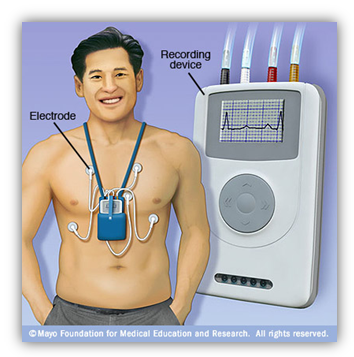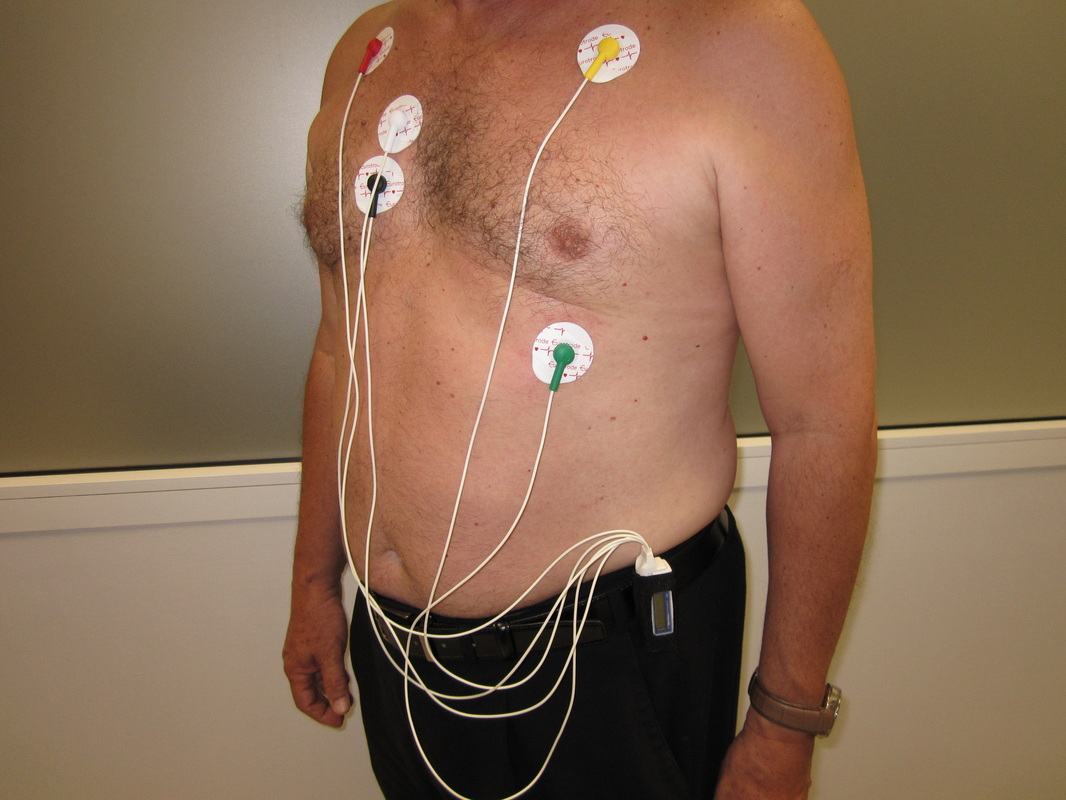

We suggest that both men and women wear a firm fitting singlet or T-shirt to bed at night to reduce the chance of leads becoming unattached. It is advisable for women to wear a bra.Allow approximately 30 minutes for the monitor to be fitted.

Wear clothes that are easy to remove from the waist up. (Do not use powder or body lotions on your chest). Please shower prior to your appointment.Promptly re-attach any electrodes if any fall off.Please do not interfere with the appliance. The monitor records throughout the entire 24 hours.(Do not bathe or shower during the 24 hour period or monitor will be irreparably damaged). DO NOT GET MONITOR WET OR DROP THE MONITOR. Please inform staff at the time of booking, if you have any allergies to surgical tape. When wearing a Holter monitor or a cardiac event monitor, it is important not to bathe, swim or shower while wearing the monitor.The purpose of this test is to record your heart activity for a 24 hour period while you go about your normal daily routine. A cardiac event monitor may be worn for a few days or up to a month. Others are held in the hand or pocket, and you will be instructed to place it on your chest when you feel symptoms. However, some are worn around the wrist, and you will be instructed to press a button when you feel symptoms. Some cardiac event monitors are worn with electrodes on your chest, just like a Holter monitor. A Holter monitor is usually worn for 24 to 48 hours. In many cases, you will be asked to keep an activity log during the monitoring period. You carry the battery-powered monitor with you and can continue with your regular daily activities. While wearing a Holter monitor, sticky electrodes are attached to your chest and connected to a small recording monitor. Heart monitoring is usually conducted away from your doctor’s office as you go about your normal daily routine. What to Expect with Holter Monitor and Event Recording We work with you to help you understand your condition and develop a treatment plan that is right for you. Loyola’s cardiology and heart surgery program is nationally recognized for our diagnosis and treatment of cardiovascular conditions. Why Choose Loyola for Holter Monitoring and Event Recording? These devices may also be used to evaluate your heart following a heart attack.

Holter monitors and cardiac event monitors are used to evaluate how your heart responds to your normal activity and whether your heart exhibits signs of arrhythmia. Turning on your monitor when you feel dizziness, chest pain, faintness or the sensation that your heart is skipping a beat can help to identify if there is a heart issue causing your symptoms. Your doctor may ask you to wear the monitor for several days or up to a month. Your Loyola cardiologist may recommend a cardiac event monitor if your symptoms occur less than daily. The electrodes can detect an irregular heartbeat or other heart symptoms.Ī cardiac event monitor, which also records heart activity, is turned on at the time of an “event” when you are experiencing a symptom.
#Heart monitor holter series#
Much like standard electrocardiography, a Holter monitor records electrical signals from the heart through a series of electrodes that are attached to your chest.
#Heart monitor holter portable#
Your Loyola doctor may also use these devices to determine if your pacemaker is working properly or to be sure that your medication is effectively managing your irregular heart rhythm.Ī Holter monitor is a portable device that keeps track of the electrical activity of your heart (electrocardiography or ECG) and is usually worn for 24 to 48 hours. Holter monitoring and event recording are two ways doctors at Loyola Medicine diagnose heart rhythm problems. Monitoring Device to Record and Diagnose Heart Rhythm Problems


 0 kommentar(er)
0 kommentar(er)
